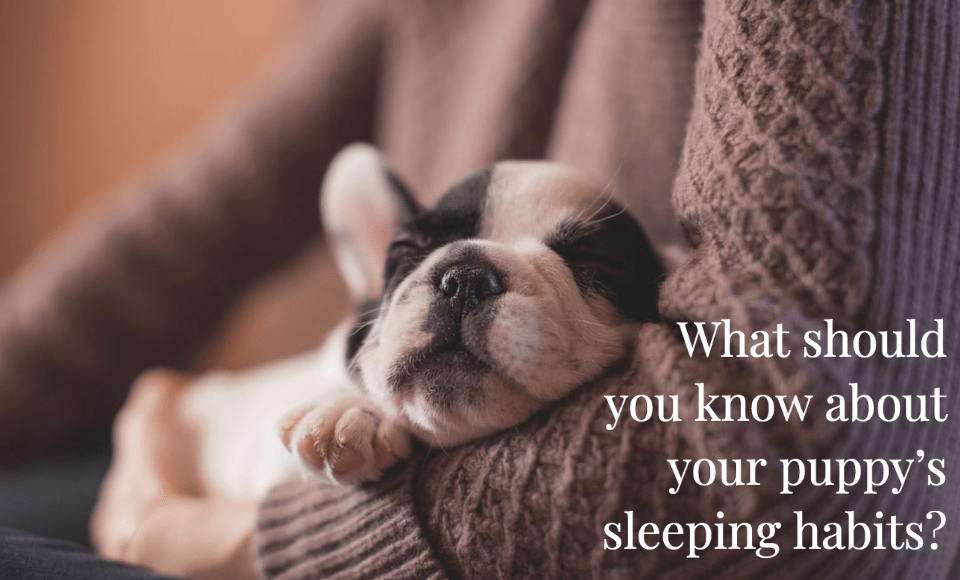As a dog owner myself, you may wonder about the sleeping habits of dogs, more specifically, puppies. It is not unusual for a puppy to be restless when first bought him. The information that follows will help you understand your puppy’s sleeping habits.
Very much like a human baby, puppies need a large amount of sleep during the day as well as the night. The amount of sleep the puppy needs varies greatly between the vast amount of dog breeds. Your veterinarian should be able to give you more specific information about your dog breed, or you can find information about the breed online.
Some owners like to buy a crate for the puppies as it gives them more security when they are still getting used to being away from their mothers. There are several benefits to implementing the crate method from a young age, including:
- Easy to maintain, especially when they are not fully toilet trained yet. Cleaning up a crate is much easier than other types of bedding.
- For houses or rooms with little space, crates are ideal because they don’t take up a lot of room and all of the puppy’s toys and blankets can be put inside.
- The crate can be brought when traveling with the puppy. By traveling in the crate the puppy will feel safer and less scared.
- It gives them their own personal space to get away from things such as children or other pets. It is their safety spot where nobody can disturb them.
Crates are great homes for puppies and dogs alike but you should always make sure the crate is the right size for it. If it is too small, the puppy will feel uncomfortable when in there. If it is too big, it won’t feel as secure to them. So in general, the puppy should have enough space to move around a little and to adjust their position.
You may know that puppies can grow at an incredibly alarming pace, so what you can do is buy a large dog crate that will accommodate your dog when it is fully grown. You can section some bits off with dividers or just cardboard until they get big enough to use the space. This is probably the most cost-effective way that is also sustainable in the long run. The most popular types of crates are plastic or metal mesh ones.
Another alternative to a crate is just buying a tray with bedding. This is preferred by some owners as it gives the dog more freedom, and looks a lot more comfortable than a crate. If you want to go down this route, you should be aware that as puppies are normally teething in their first year, they are likely to chew on anything they can find which may include this new expensive cushion you bought them. My advice is to lay down some old clothes or towels while they’re young as these are more disposable, and it won’t matter as much if they have an “accident”.
The last option is to let it around the house with no confinement at all. This is not recommended because, at this age, they aren’t fully toilet trained so you may wake up with a lot of cleaning to do. There is also the problem that they could bite and damage things. The only way this could work is if the house is incredibly small and there isn’t a lot of clutter. Letting the puppy run free may also encourage bad habits such as barking at the postman in the morning.
It is more important than ever, especially at this young age, that you set down all the rules and introduce to him a comfortable and secure environment to stay.
The last thing to consider is to look at whether your own sleeping habits and how they are affecting your dog’s. If you have bad sleeping habits, it would only be natural that your puppy is also affected by this.

